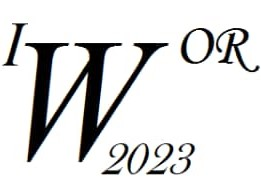Ponente
Descripción
The resting state electroencephalogram (EEG spectrum) has long been the mainstay of research and clinical application. Emphasis has shifted in recent years from nonparametric, frequency-resolved spectral descriptions to parametrizations distinguishing between components. The xi process (also known as the background, 1/f, or aperiodic component) and the alpha rhythm are the most prominent.
The components of the FOOOF model are multiplied and fitted by least squares to the spectrum (additively in a log scale). By contrast, the xi-alpha model proposed by Pascual-marqui in 1988 considers that spectral components are additive in the natural scale and based on a maximum likelihood approach that is advantageous in allowing formal statistical inference.
A limitation of these models is that they only parametrize the EEG spectrum, which is an incomplete description of any nonlinear system. Since any biophysically based model of EEG generation contains essential nonlinearities, we deemed it necessary to extend the xi-alpha model to the bispectrum, allowing us to examine the linearity, Gaussianity, and existence of harmonic relations among the components of the EEG.
In order to reduce issues of volume conduction, we base our analysis on Stereoelectroencephalography (sEEG) data described in Frauscher et al. 2018. 1772 electrodes wake stage recordings were separated into 17 segments, each with a duration of 3.8 seconds, from which we calculated the Spectrum, Bispectrum, and Bicoherence.
We model the spectrum with a slight modification of the traditional xi-alpha model in which the alpha rhythm is modeled with several harmonically related peaks. We use the Gaussian kernel for these peaks. This model is estimated by maximizing the Whittle likelihood.
On the other hand, the new bispectral xi-alpha model is modeled with the summation of the weighted product kernels of its spectrum.
The joint model for spectrum and bispectrum is estimated with an approximate likelihood.
We obtained an excellent spectral fit for all 1772 cases. Note the adequate description of the alpha peak and its harmonics. The harmonic relations are captured with their bicoherence. The Akaike information criteria comparing models with and without the xi process show that xi process can be eliminated from consideration in the bispectrum. This result indicates that the xi process is linear and Gaussian, which are conditions for it being zero. However, the alpha process is strongly nonlinear and shows harmonic coupling, as expected from neural mass modeling. This insight can lead to further links with more detailed biophysical modeling.

